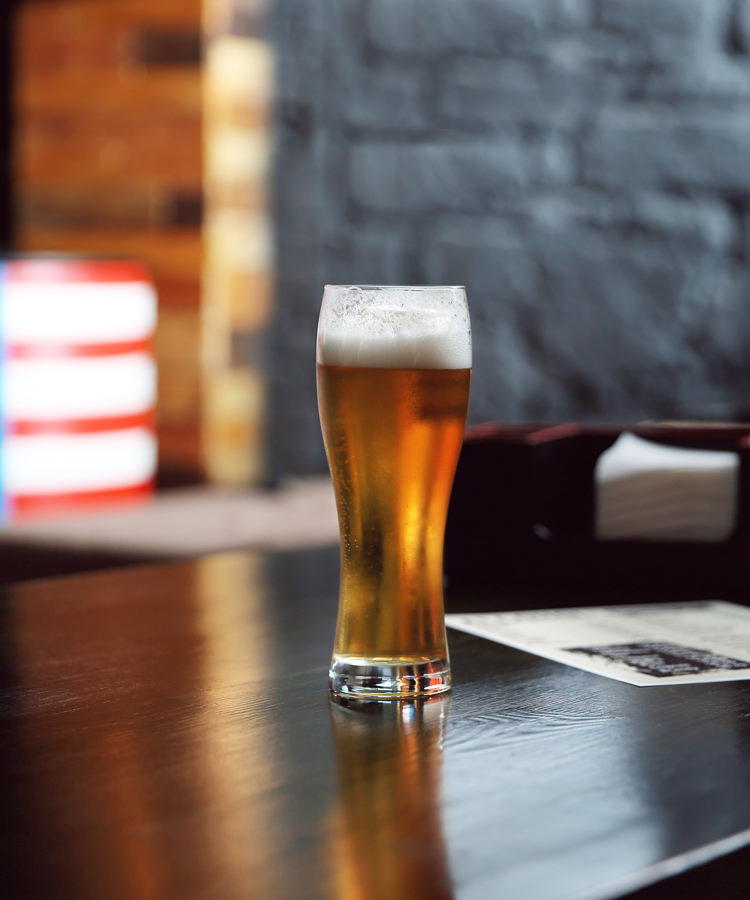
Let’s take it back.
When John Wagner, a Bavarian brewer, arrived in America in 1840, he came with some precious cargo: a supply of lager yeast from his native Bavaria. And as far as American cities go, he picked the right place. Philadelphia had been brewing beer for 160 years. However, the beer that Philadelphia, and the rest of America, had been imbibing was not like the beer Wagner had drunk in Germany. Americans were drinking English-style ales. We have Wagner to thank for introducing the lager to America.
It wasn’t easy, however.
When German brewers arrived in the U.S., they naturally began to find that much of its barley was a variety called six-row, as opposed to the German two-row. “This stuff was gummier, higher protein, and hard to brew,” Mikey Lenane, Sixpoint’s Formulations Specialist, says. “Basically, the beers were coming out too thick.”
To solve this problem, German-American brewers began adding lower-protein grains, like rice and corn, to more closely emulate the German lagers. These pre-Prohibition lagers, with the blend of rice or corn and the six-row barley, were probably delicious and fairly close to what was being brewed back home in Germany.
Once they figured it out, these light, cold-fermented, and refreshing lagers soon spread up and down the East Coast, and then across the country. The style especially took off in New York, where, by 1877, George Ehret’s Hell Gate Brewery (established 1866) became the largest in the country.
Prohibition totally shattered America’s beer dreams when it began rolling out, state by state, in 1920. When Prohibition finally lifted, in 1933, what was left was a handful of domestic brewers that now ruled beer-making in America. For decades, mass-produced lagers came from a small number of very large breweries pumping out impressively consistent, if disappointingly flavorless, beers.
“What happened over time is rice and corn started being used as flavor lightener … to make less flavorful beer. A lighter beer that people can’t really taste,” Lenane says.
Flash forward to the present. Now, craft brewers are taking lager back. One such innovator is Sixpoint Brewery in Brooklyn, N.Y. Its recent year-round release, Alpenflo, is here to change the way Americans think about German Helles lagers.
Bavaria to Brooklyn
View this post on Instagram
“It is the most easy-drinking German beer style, even more so than pilsner,” Lenane says of classic Helles lagers. “The beer showcases a super-clean fermentation characteristic with all pilsner malt, and a lighter touch with hops perfect for a massive stein or a 6-pack.”
The Helles lager was invented in Bavaria, a region of Germany that has become almost synonymous with the style.
“Helles was the German answer to Czech Pilsner, the soft, smooth, eminently repeatable and quenching beer brewed a couple hundred miles away,” says Lenane.
Sixpoint’s interpretation of the Helles-style lager is hardly an interpretation. It’s more like a replica. The recipe uses only Bavarian-grown ingredients, including hops and barley sourced from family farms in the region.
Alpenflo, Sixpoint’s new lager, reflects the time Shane Welch, Sixpoint’s founder, spent traveling Germany learning different styles of brewing techniques. The name Alpenflo originates from an optical phenomenon in the German Alps known as alpenglow, in which a reddish glow appears on the horizon opposite the sun. The latter half of the name is a nod to the heritage of the style being brewed with run-off from the Alps, and also hints at the beer being one that flows, pint after pint.
What Alpenflo looks to accomplish (other than being super refreshing and tasty) is to remind American beer drinkers what lagers are supposed to — or at least, used to — taste like.
This isn’t a new style, of course, but “it is one of only a handful of fresh American-made high quality Helles lagers on the market,” Lenane says. “The trip from Germany can definitely take the sheen off of the brightness of the style … now you can find a classic Helles in a corner store that hasn’t traveled an ocean to get to you.”
We don’t know about you, but we’re ready to go with the “‘flo.”
